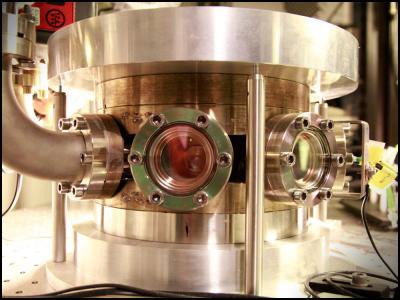Can Energy falling on another kick the former out? Researchers at the Niels Bohr Institute have managed to successfully combine two different worlds: Quantum physics & Nano physics.
Semiconductors are building blocks of Technology and gadgets and the limiting factor of Silicon chips has always been heat dissipation: More efficiently we can remove heat from semiconductor chips, higher clock they can run on.
LASERs are here to save the future, as they pave way to building most effective, efficient means of cooling Semiconductors.
How LASER Cooling works
Ironically, cooling is observed by actually heating the material. Using lasers, researchers cooled membrane fluctuations to minus 269 degrees C with fractions of energy utilization.
“In experiments, we succeeded in achieving a new and efficient cooling of a solid material by using lasers. We have produced a semiconductor membrane with a thickness of 160 nanometers and an unprecedented surface area of 1 by 1 millimeter,” explained Koji Usami, associate professor at Quantop at the Niels Bohr Institute. “In the experiments, we let the membrane interact with the laser light in such a way that its mechanical movements affected the light that hit it. We carefully examined the physics and discovered that a certain oscillation mode of the membrane cooled from room temperature down to minus 269 degrees C, which was a result of the complex and fascinating interplay between the movement of the membrane, the properties of the semiconductor and the optical resonances.
What is worth noting here is that even though the membrane is getting a little bit warmer overall, the membrane is cooled at a certain oscillation and the cooling can be controlled with laser light. So it is cooling by warming! Laser cooling of atoms has been work in progress for years in the institute and they have successfully cooled gas clouds of cesium atoms down to near absolute zero i.e. minus 273 degrees C – using focused lasers – while creating entanglement between two atomic systems.
This is like rocket science, but they make it sound so easy.
What it means for Science & Computing
It Opens entirely new possibilities for a new field of Science called Optomechanics, which is the interaction between light, and a mechanical motion. Optomechanics could pave the way for cooling components in quantum computers, computers of the Future.
This invention could also lead to the development of new sensors for electric current and mechanical forces. Such cooling in some cases could replace expensive cryogenic cooling, which is used today and could result in extremely sensitive sensors that are only limited by quantum fluctuations. The possibilities are endless, you could hold a supercomputer without melting your hands in the future, thanks to Laser cooling.
We write latest and greatest in Tech Guides, Apple, iPhone, Tablets, Android, Open Source, Latest in Tech, subscribe to us @geeknizer on Twitter OR on Facebook Fanpage, Google+:
loading...
loading...

